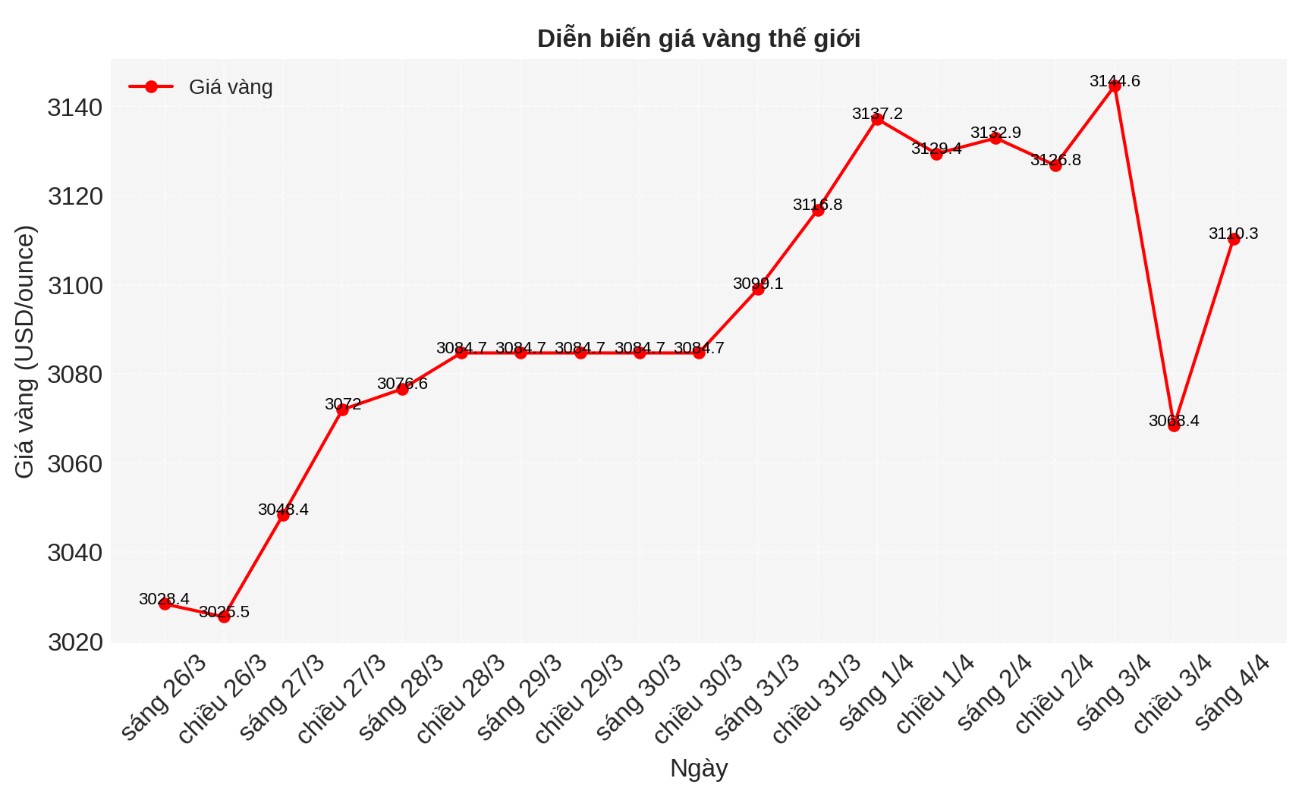According to Kitco, the gold market is fluctuating strongly as gold buying and selling activities based on price differences between markets - which have brought profits for many months now - are ending due to changes in tax policies.
As the North American market opened, gold prices fell 2% on the day. However, prices have since recovered and are now stable.
After weeks of uncertainty, US President Donald Trump has announced global import tariffs, but not for precious metals such as gold, as well as copper, steel and aluminum which has caused increased gold reserves at warehouses in New York to lose strategic value.
Although gold may still face profit-taking pressure in the short term as investors reassess the new tariff picture, some experts believe that this precious metal is still strongly supported.
According to Kelvin Wong, senior market analyst at OANDA, although Trump's announcement has somewhat eased uncertainty, the market still has many concerns that gold prices may continue to rise.
A series of new taxes from the White House administration increase the likelihood of the US falling into a state of stagflation. The world has not seen this period since the 1970s-1980s, so there will be more uncertainty in planning business strategies and implementing monetary policy to cope with slowing economic growth a factor that makes gold an attractive preventative asset - Wong said.

This expert also commented that if the US stock market continues to weaken, gold will further promote its role as a safe haven. Although gold was sold off strongly on Thursday, it is still performing better than the stock market.
The S&P 500 opened the North American trading session with a sharp decrease and is currently continuing to decrease by 4%, trading around 5,442 points. Meanwhile, spot gold prices are currently at $3,126.8/ounce, almost unchanged for the day.
According to Wong's forecast, gold prices will be supported if they fall to the 3,080 - 3,060 USD/ounce range, and may have difficulty increasing to the 3,180 and 3,215 USD/ounce levels.
Commodity analysts at TD Securities also predict that gold prices will continue to fluctuate strongly, although "there is an overbought price but few people hold it".
Currently, non-CTA fund managers are holding less gold than in March last year. Macro funds have been selling and shifting assets to the Chinese market, causing their holding position to fall to levels that we believe are currently lacking, although the price chart shows otherwise, they said.
In other words, although gold prices are high, the actual amount of gold held by investment funds is quite low, which opens up the possibility that gold still has room to increase if demand returns.
TD Securities also believes that gold prices may be adjusted but not down deeply. They explained that the increase in gold in the past 12 months has helped many investors make significant profits, so it is not easily affected by short-term selling pressure.
The CTA system will not sell strongly unless the market falls further. The current risk of adjustment may only be the accumulation process over time, if there are signs of "exhaustment" from the buyers" - they said.
Over the past 12 months, gold prices have increased by 32.5% and in the first quarter of 2025 alone, gold has increased by more than 18%. This is also the quarter with the strongest increase in 39 years of gold.











